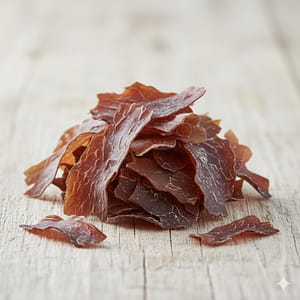- Home
- Dulse Seaweed (Palmaria palmata)

I. General Information
A. Scientific Name:
Palmaria palmata
B. Alternative Names:
Dulse
C. Pronunciation:
dulss
II. Sourcing and Origin
A. Source:
Collected from the North Atlantic coasts of Ireland, Iceland, Canada, and France.
B. Geographic Origin:
North Atlantic coasts (Ireland, Canada, Iceland, Scotland)
C. Method of Processing:
Hand-harvested, sun-dried, roasted
III. Properties and Uses
A. Physical Properties:
Red-purple fronds, chewy, smoky flavor
B. Chemical Composition:
Protein, potassium, iron, iodine, omega-3 fatty acids
C. Primary Uses:
Skincare: Soothing and antioxidant extracts
Haircare: Mineral-rich nourishment
Wellness: Energy and thyroid support
Culinary: Snack, seasoning, soups
Household: Salt substitute
D. Key Benefits:
Chewy, savory, nutrient-dense; good source of plant protein
IV. Safety and Considerations
A. Potential Allergies:
Possible iodine intolerance
B. Best Practices for Use:
Eat roasted as chips or sprinkle flakes on dishes
C. Special Precautions:
Overconsumption of iodine-rich seaweed may stress thyroid
V. Fun & Educational Facts
A. Historical Context:
Staple in Irish and Scottish coastal diets for centuries
B. Did You Know?
Dulse can taste like bacon when fried!
C. DIY Recipe Idea:
Dulse chips
Dulse chowder
Dulse seasoning flakes
